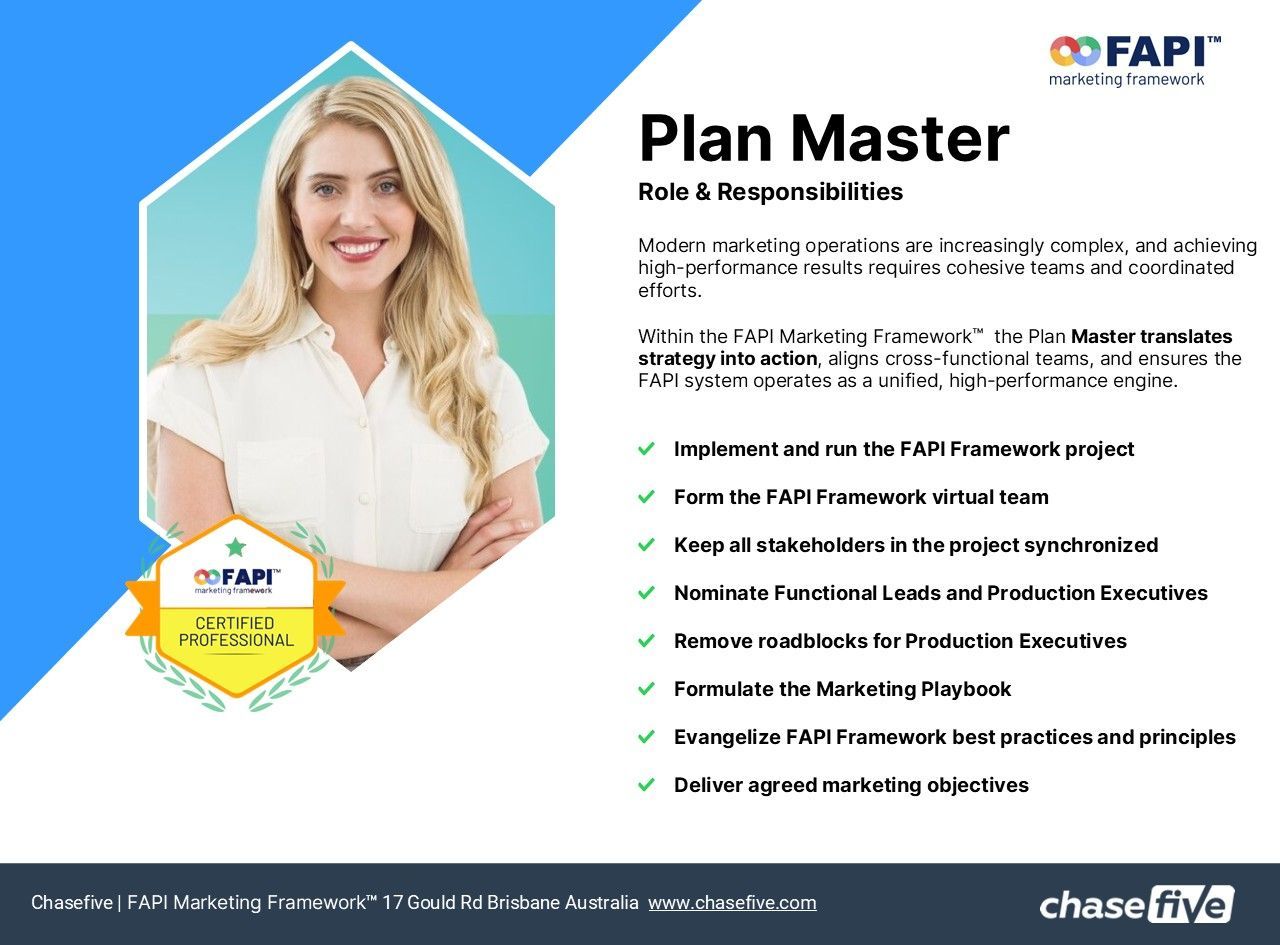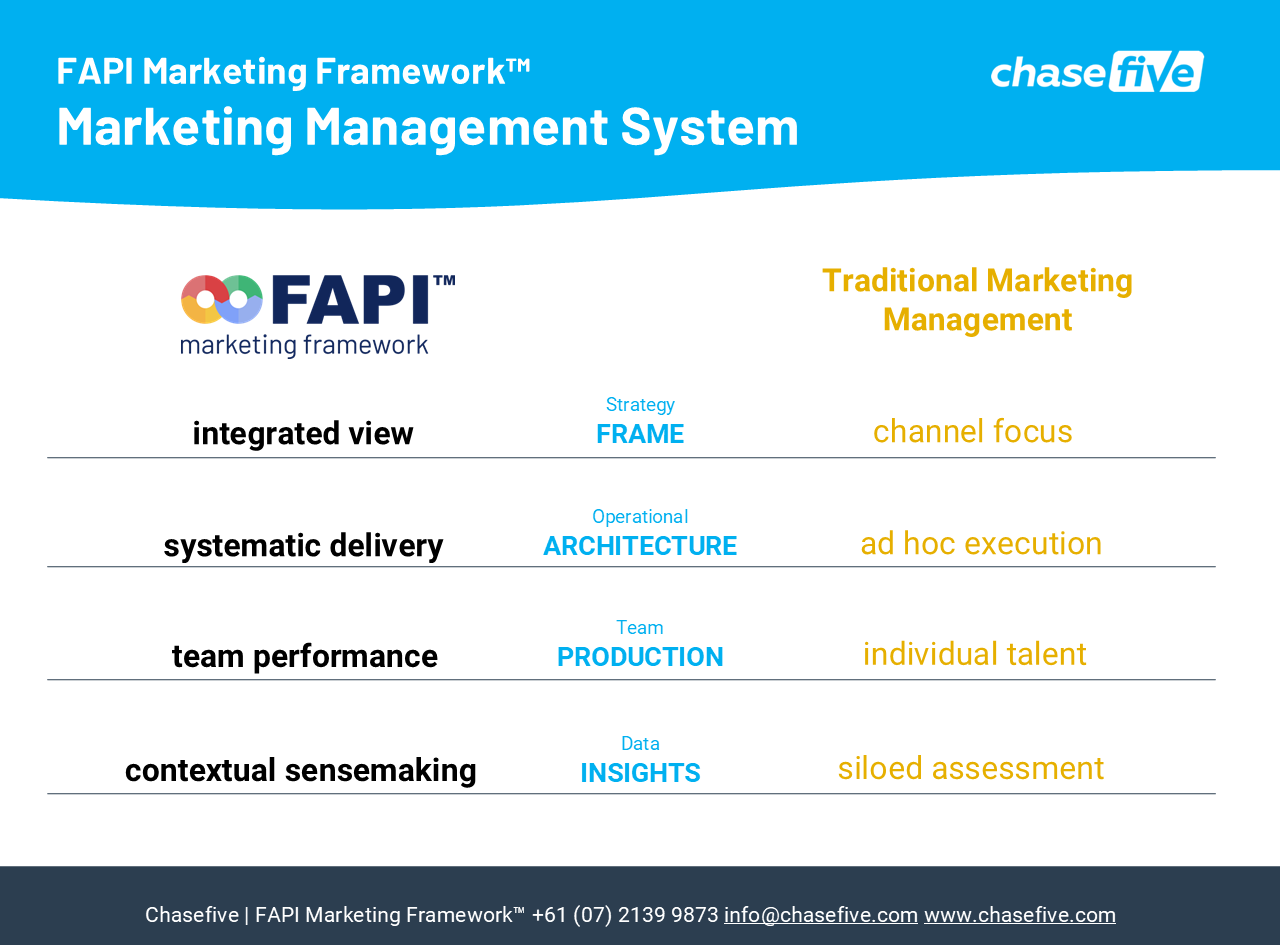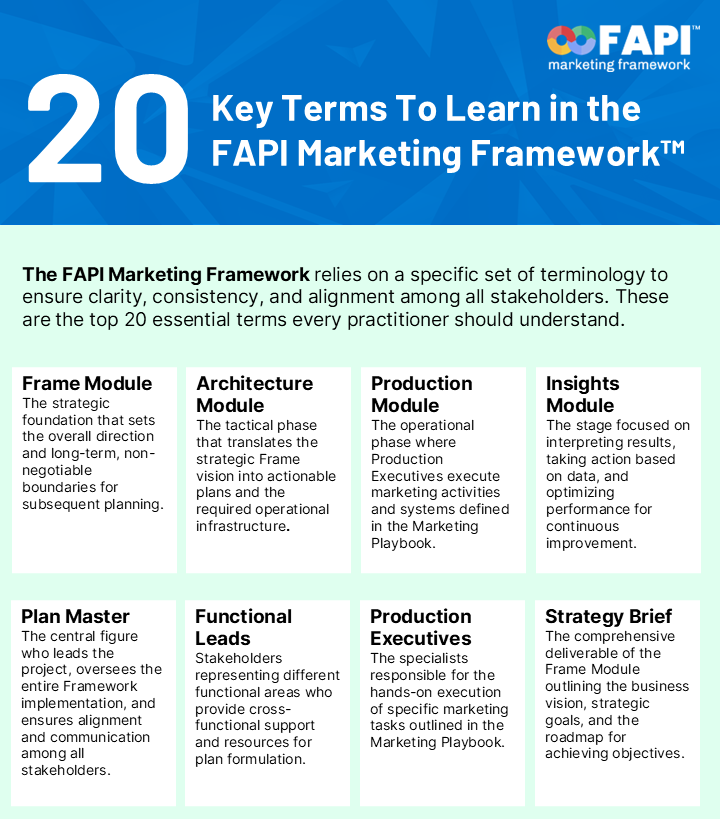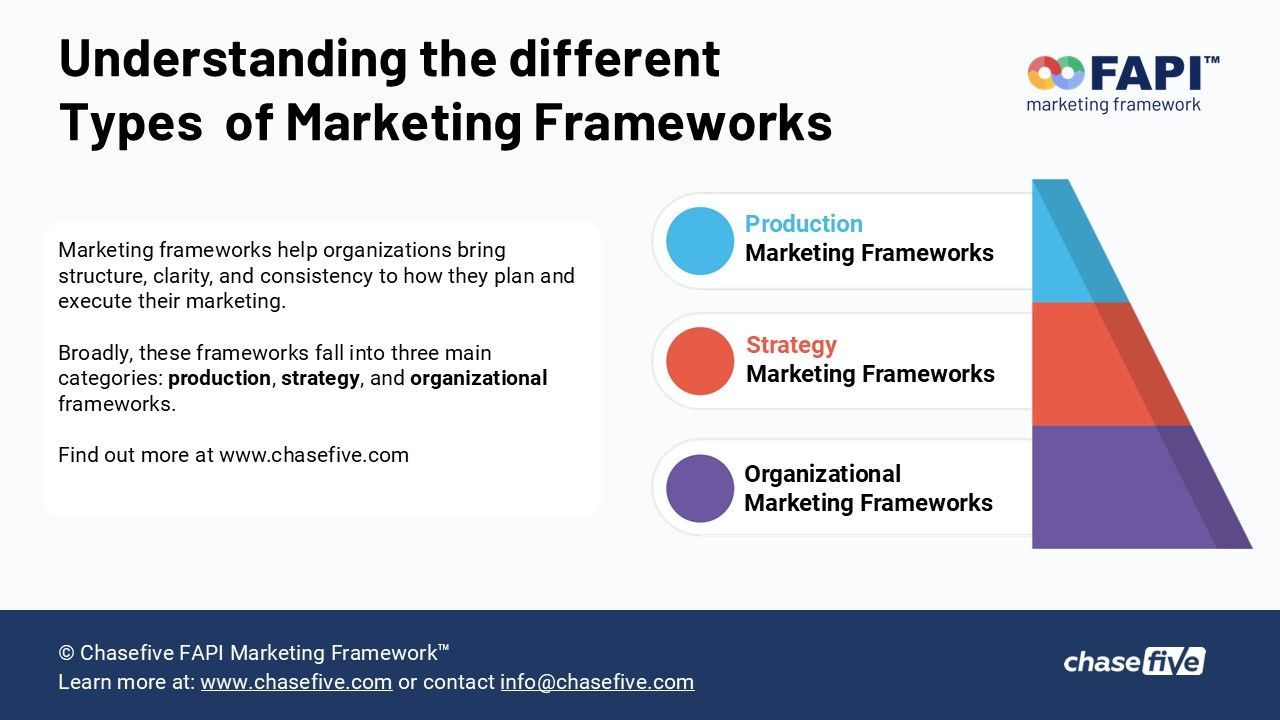Chasefive unveils the latest version of FAPI Marketing Framework™ Knowledge Hub
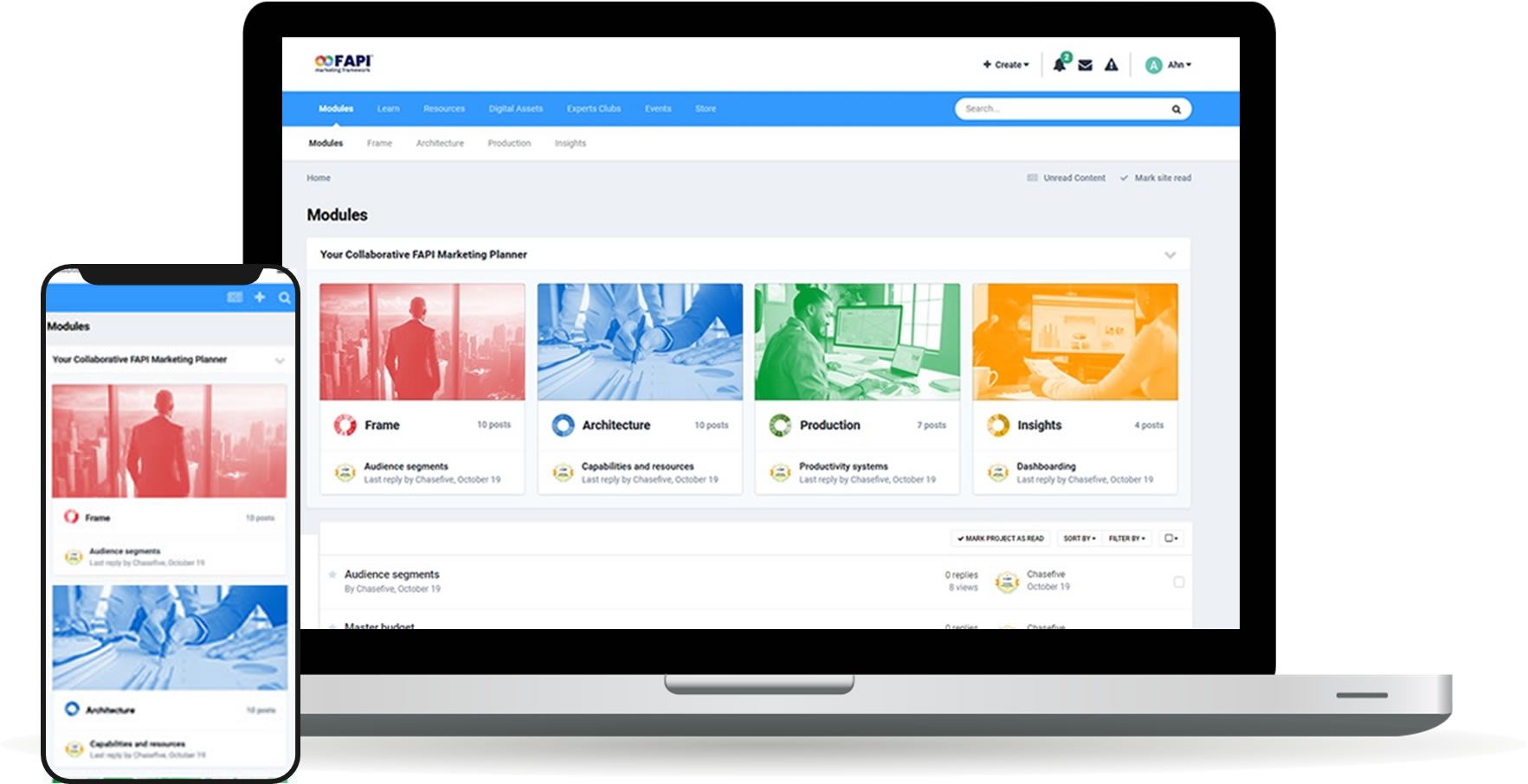
Chasefive, a leading name in marketing education and resources, is delighted to announce the release of the latest version of the FAPI Marketing Framework™ Knowledge Hub. This update brings a host of innovative features and valuable content aimed at empowering marketing professionals and enthusiasts with the latest insights and tools to excel in the dynamic world of marketing management.
Here's a summary of the new features included in the FAPI Marketing Framework™ Knowledge Hub:
- Expanded Content Library:
Users can access an extensive collection of resources, including articles, case studies, whitepapers, and a comprehensive range of digital assets and resources, allowing them to stay informed and ahead of the latest FAPI Marketing Framework developments and best practices.
- FAPI Marketing Planner: The introduction of interactive FAPI Marketing Planner Modules provides users with a hands-on approach to mastering marketing concepts. This feature enables users to create and fine-tune marketing plans in a guided environment.
- Experts Community Club:
Users have the opportunity to connect and collaborate with fellow marketing enthusiasts. They can share experiences and engage in meaningful discussions through an enhanced community platform designed to foster networking and knowledge exchange.
- Learning & Certification Paths:
Users can embark in their FAPI
Marketing Framework learning journey by selecting tailored paths that align with their specific career objectives. This ensures that they access content that directly contributes to their professional growth.
- Expert Webinars: Users can gain insights from industry leaders through a series of webinars. These sessions offer valuable advice and guidance directly from the experts in the field.
To explore the new and improved features of the FAPI Marketing Framework™ Knowledge Hub, visit the platform [here](insert link). Existing members will find their accounts automatically updated to grant access to the latest content and features. New users can quickly and easily sign up to embark on their learning journey.
Marcel Verni, Vice President of International Business for FAPI Marketing Framework™™, expressed excitement about the release, saying, "We are thrilled about the latest version of the FAPI Marketing Framework™ Knowledge Hub. This update represents a significant step forward, providing marketers with an even more comprehensive and interactive resource to enhance their skills and stay up-to-date with the evolving marketing landscape."
Enhancing marketing management benchmarks
The FAPI Marketing Framework is a sequential marketing management framework specifically designed to assist marketing and business leaders in controlling the marketing process and improving the alignment between business vision and marketing execution—an issue that ranks high on the list of C-level suite priorities.
Chasefive is dedicated to providing marketing professionals with the best resources to succeed in the field, and the team is eager to receive feedback and suggestions from users as they explore the updated Knowledge Hub.
Join the learning community at the FAPI Marketing Framework™ Knowledge Hub and take your marketing management skills to the next level.
